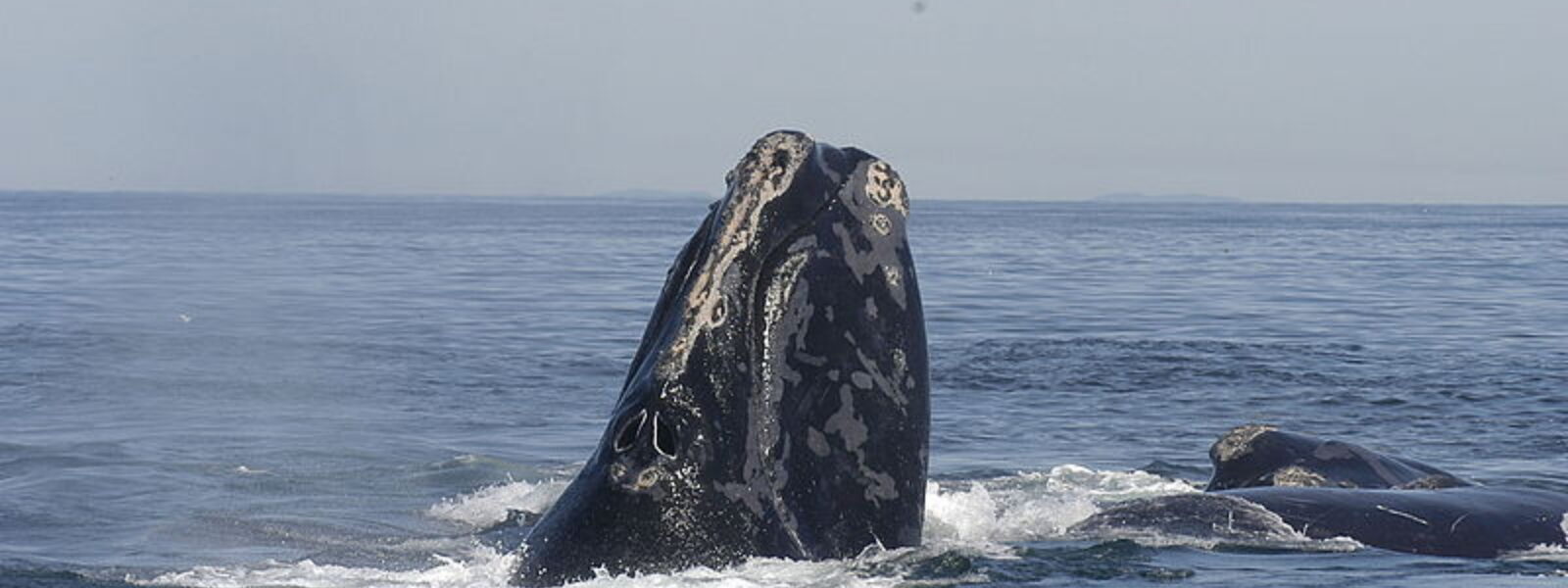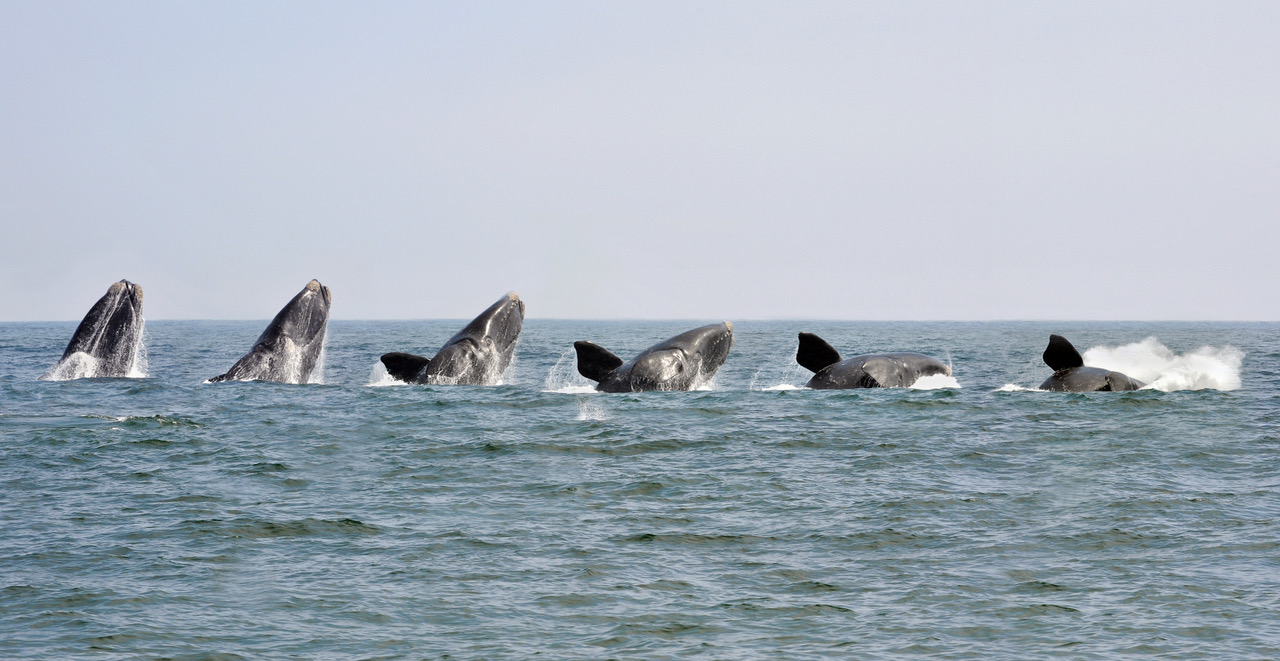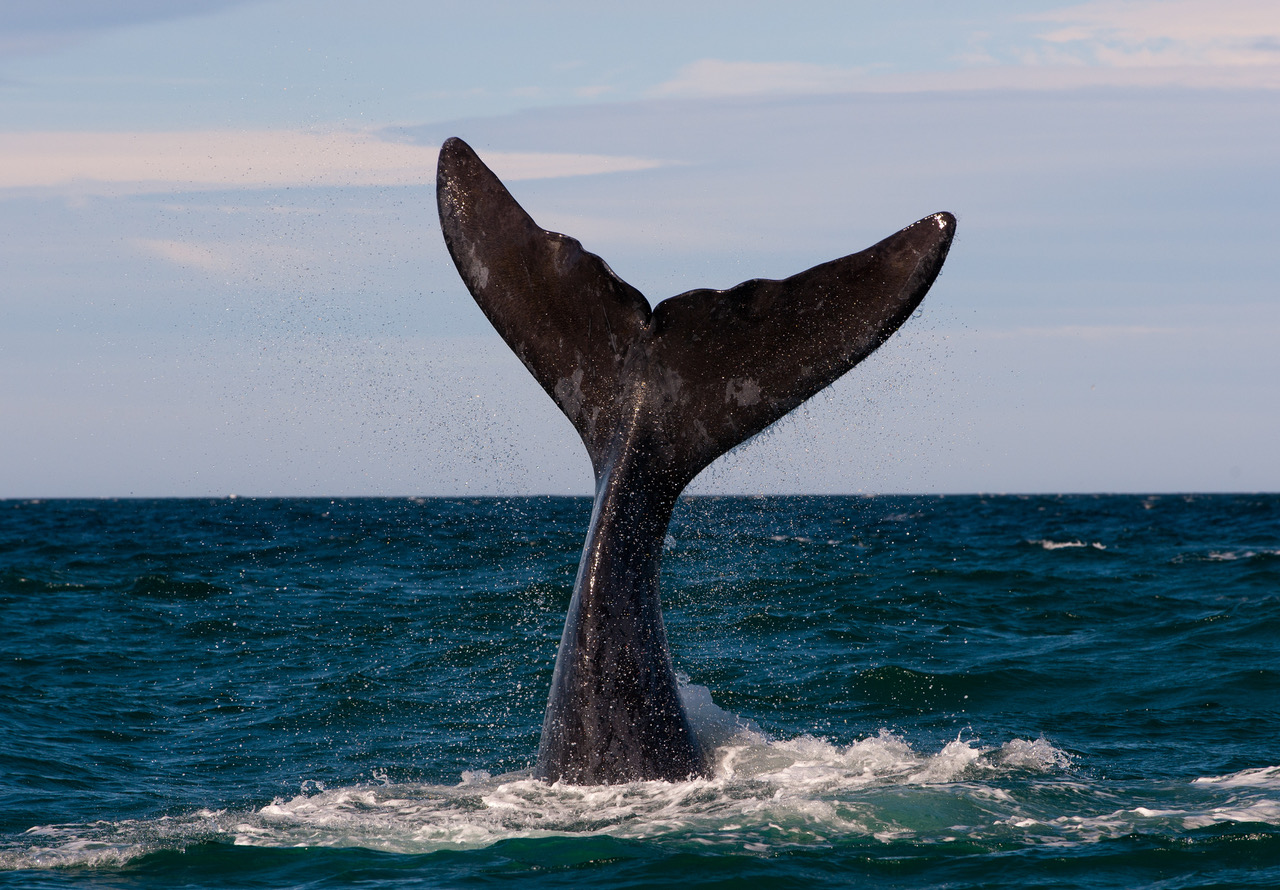
North Atlantic Right Whale Threatened With Extinction
Tara Van Hoorn is an intern with the International Marine Mammal Project of Earth Island Institute and majors in Conservation Resource Studies at the University of California, Berkeley.
Human-produced debris is filling up the ocean at an alarming rate. Necropsies of nearly every marine animal reveal the high risk of this pollution crisis, as marine animals like birds, dolphins, turtles, and whales have all been found dead contaminated with various types of trash. Although this pollution comes from individuals and corporations worldwide, one of the most prominent polluters and threats to marine life is the commercial fishing industry, which adds approximately 10% of the plastic waste dumped into the ocean annually.
Species such as the North Atlantic Right whale (Eubalaena glacialis) are experiencing some of the worst damage from active fishing gear and fishing pollution. Entanglement in fishing gear has caused the Right whale population to decline dramatically, pushing them close to extinction.
The Right whale has a troubling past that dates back to early whaling operations in the 15th century and perhaps earlier. Whalers off the East coast of the US specifically targeted Right whales because they were slow-moving and the easiest to harvest as they floated to the top when killed, making them easy to bring to shore. These whaling efforts caused the population to plummet, setting its course for a difficult, seemingly impossible recovery. Since this tribulating whaling period, the North Atlantic Right whale populations have fluctuated due to continued (and often illegal) whaling and entanglement.
The extinction risk of North Atlantic Right whales also poses a threat to the entire ocean. Right whales hold an important role in the marine food chain by acting as key predators of marine invertebrates like krill and phytoplankton. Similarly, researchers have found that Right whale feces are crucial to facilitating nutrient transfer from the ocean floor to the surface as their defecates float to the top of the water column. This phenomenon is known as the biological pump and is crucial to providing nutrients to those at the bottom of the food chain, supplying phytoplankton with the necessary nutrients to photosynthesize and create the basis of the marine food web.

Despite the great importance of these animals, they are still in great danger as roughly 360 individuals remain in their population. With such low numbers, even a few extra deaths each year can cause declines in the whale population. The greatest threat to the right whale is in fact entanglement in fishing lines left in the ocean. Researchers discovered that about 83% of the remaining Right whale individuals show scars from entanglement and that approximately half of them have been entangled more than once. This entanglement occurs as whales swim into and get stuck in fishing lines connected to crab/lobster traps on the bottom of buoys on the surface. These fishing lines and ropes extend throughout the entire vertical water column, posing a great threat to the right whale that hunts in the entirety of the water column top to bottom. As fishing gear keeps advancing, fishing lines, now made largely of plastic materials, are becoming stronger and increasingly dangerous to Right whales and are harder to escape. These entanglements have numerous possible outcomes. Sometimes, they can immobilize body parts, such as fins or tails, preventing them from being able to swim or reach the surface, which oftentimes leads to drowning. Fishing lines can also cause lacerations that, if deep enough, can slice arteries and cause rapid blood loss. Entanglements can even prevent the whales from feeding or mating, which causes a slower, gradual death.
Another common threat to right whales and other cetaceans is ship strikes. Modern ships move at such a fast rate that they often run into whales close to the surface and unable to get out of the way. Several proposals are being implemented to slow ship speeds and provide ship corridors where whale activity is unlikely to occur to avoid such strikes.
With these whales at such high risk, it is apparent that we must take drastic measures in hopes of saving their population. Many solutions have been proposed by the US government, the National Oceanic and Atmospheric Administration, and scientists, including geographic and temporal fishing restrictions, new laws and regulations on gear, and new advanced line-less fishing gear.
However, these solutions come at the expense of the expansive fishing and lobster industry on the East Coast. Many small towns that rely solely on this industry to run their local economies experience great financial losses due to these fishing restrictions and the reduced fishing allowances, combined with the stress of the COVID pandemic reducing demand for crab and lobster. Many of these fisherpeople have fought back against the laws, arguing that they are being “endangered” by the strict policies.
The big question is: how is it possible to simultaneously save the North Atlantic Right whale and protect the livelihoods and jobs of fisherpeople? This issue arises in many different types of environmental work as many efforts toward sustainability threaten the current long-standing economies that have been built on exploiting a resource. In the case of the North Atlantic Right whale and East coast fisherpeople, their needs often oppose, as the stricter fishing regulations place the fisherpeople at risk of losing their income, while the presence of the fishing industry takes huge tolls on the survival of this whale population. This example helps us realize how multi-faceted and complicated this and many other issues of conservation can be.

One of the most promising solutions to this predicament is the invention of ropeless fishing gear dropped into the ocean and recovered with GPS navigation and grappling hooks instead of floating fishing lines. This method would greatly reduce the number of fishing lines that are left behind that pose a threat to North Atlantic Right whales (and many other marine animals).
However, this new technology is very expensive to produce and purchase, making it an impractical option for the majority of fisherpeople. To reach a compromise that protects both the North Atlantic Right whales and the New England fisherpeople, the US government needs to subsidize these technologies to make conservation easily accessible and the best possible option. We must urge our representatives to support this kind of subsidy if we want any chance of saving the North Atlantic Right whale without destroying thousands of livelihoods.
